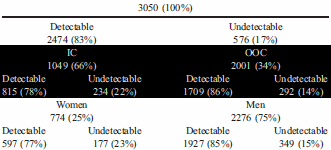|
Definition: "An ergogenic aid is any substance or phenomenon that enhances performance "
|
|
||||||||
14.09.2010 |
|
|
So that's why doping hunters don't find EPO any more
Reports appeared in 2006 in the German media of a 'red powder' that athletes slipped into their urine during doping tests. The powder masked the use of EPO.
Proteases, was doping hunters' first suspicion: protein-splitting enzymes you can buy everywhere, in all flavours and mixes. They are used in labs, in washing powders and in industry. You find them in anti-catabolic supplements and in some protein preparations.
A few months after these reports, news agencies announced that Martial Saugy, an Swiss doping hunter, were developing a test for proteases. [AP Oct. 1, 2006]
Doping hunters hardly catch any athletes for EPO these days. But they are coming across more and more urine samples which, according to the test results, contain no EPO at all. That's impossible. EPO is always present in urine – even in the urine of people who don't use synthetic EPO.
Strangely, samples taken during competitions [IC] were relatively more often EPO-less than the samples the doping hunters collected during the out-of-competition checks [OOC]. During the kind of extreme exertion that occurs during competitions, the urine actually contains more proteins than normal, so also more EPO.
To find out whether it was additional proteases that were causing these effects, the Swiss devised an experiment. They added a small amount of the protease trypsine to a urine sample that contained synthetic EPO, and indeed – the doping test picked up nothing at all.
Doping hunters don't test for proteases, and it doesn't look like they ever will. In 2007 doping hunters at the Germany Sport University Cologne published the results of tests for chymotrypsine, trypsin and papain, [Int J Sports Med. 2007 Jul; 28(7): 545-9.] and in 2009 for bacillolysine and subtilisine, [Drug Test Anal. 2009 Feb; 1(2): 81-6.] but even under optimal circumstances the tests don't pick up proteases until concentrations of 15-20 micrograms/millilitre.
Sounds good, but at a concentration as low as 5 micrograms/millilitre proteases already sweep a urine sample clean. Doping hunters need to keep a close eye on how athletes produce their urine samples, and make sure there's no opportunity for them to mess with their samples. That's why athletes insert proteases into their urethra before they undergo a doping check. [Clin Chim Acta. 2007 Oct; 385(1-2): 61-6.]
Physiologists at the University of Valencia in Spain recently came up with an idea in the Journal of Science and Medicine in Sport which might render the protease trick ineffective. [J Sci Med Sport. 2010 Sep;13(5):473-4.] Doping hunters would take 2 separate samples from athletes under suspicion. The first 50 ml or so would be collected separately, as that's where the proteases would be. The urine cleanses the urethra, and then in the second sample the EPO would show up.
Sounds like a good idea. But we, naive compilers of this web magazine, wonder in our innocence whether this would work. If athletes go to the trouble of introducing proteases into their urethra with a catheter, surely they are capable of inserting the catheter even further in? And dumping the proteases in their bladder?
Source:
|
|



